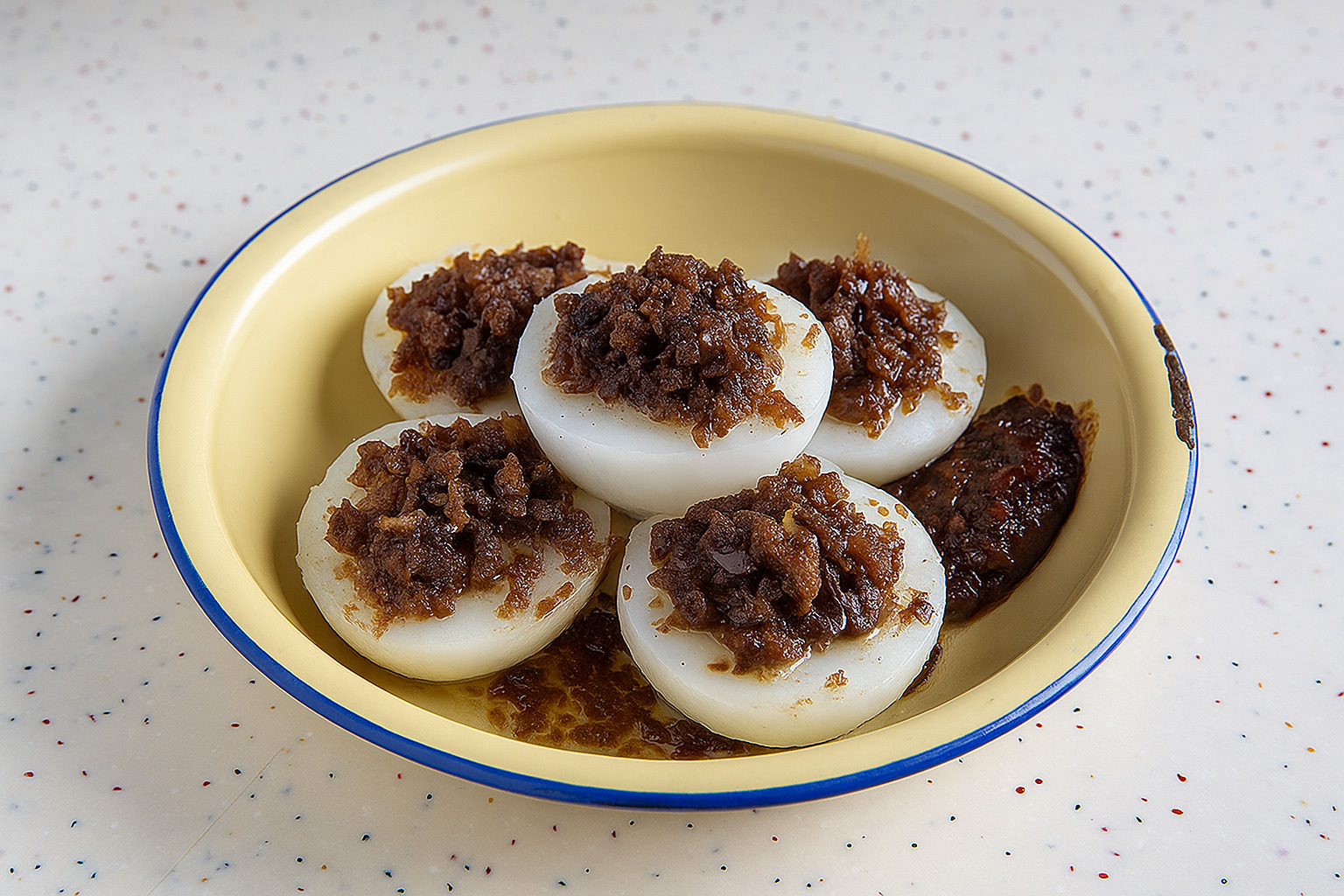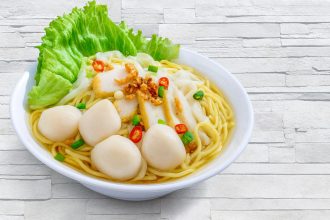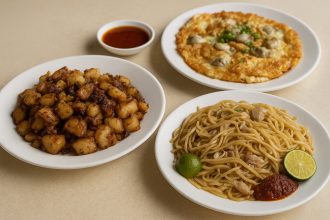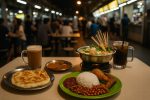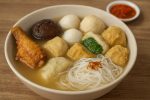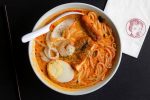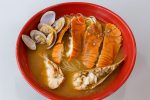Tiong Bahru Market hums with the rhythm of morning routines—fruit vendors calling out specials, the aroma of kopi wafting through the air, and regulars lining up for a taste of something familiar. Among the rows of stalls stands Jian Bo Shui Kueh, a name that has fed generations and become synonymous with Singapore’s hawker culture. Its story isn’t just about food. It’s about heritage, adaptation, and rice cakes that hold memories between soft bites.
From Pushcart to Pillar of Tiong Bahru
In 1958, Mr. Ang wheeled a humble pushcart through the early corridors of the Tiong Bahru Market. His offering was simple: steamed rice cakes topped with preserved radish and a bit of heat. It was breakfast, snack, and comfort for the post-war generation. Over time, it became something more—routine for the early risers, a taste of the past for the nostalgic, and a cultural reference point for tourists trying to understand Singapore one dish at a time.
Today, under the guidance of third-generation owner Eric Ang, Jian Bo operates multiple outlets across the island. But the flagship remains in Tiong Bahru. Same market. Same dedication. Different pace.
The Core: Shui Kueh as It Should Be
Chwee kueh, the Teochew term meaning “water rice cake,” speaks to its simplicity. But Jian Bo’s version refines that simplicity without distorting it.
- The rice cake is soft yet firm enough to hold shape. No excess stickiness. No sogginess. Just a subtle chew that lets the topping shine.
- The chye poh is where the magic happens. Preserved radish, stir-fried until its salt and sweetness hit a perfect midpoint. Finely chopped but never mushy.
- The chilli paste balances umami with heat, underlined by dried shrimp (hae bee), grounding the bite in layers of flavor.
It’s a formula that hasn’t changed, except one thing: Jian Bo switched from pork lard to vegetable oil. A move for health, executed with restraint. The flavour stayed intact. Long-time fans kept returning.
Beyond the Rice Cake: Other Offerings
Jian Bo Shui Kueh doesn’t rest on a single dish. It expands on tradition without straying from it.
Menu Highlights:
- Steamed Yam Cake – Textured with yam bits and topped with dried shrimp and mushroom-infused sauce.
- Chee Cheong Fun – Slippery-soft rice noodle rolls served with a medley of sweet sauce and chilli.
- Nine Layer Kueh – Colourful and elastic, peeled layer by layer by children and adults alike.
- Peng Kueh – Glutinous rice packed in pink skin, moulded like teardrops.
- Nyonya Dumplings – Fragrant with spices, accented by the balance of sweet and savoury.
- Steamed Buns – Soft mantou filled with lotus paste, red bean, or char siew.
- Glutinous Rice and Fried Snacks – Varying by outlet, but always rooted in local taste.
Each item builds on the same principle: honour the ingredients, respect the method, serve the flavour.
The SFA Incident: A Test of Transparency
In mid-2022, Jian Bo found itself in headlines. Among nine manufacturers, it was temporarily suspended by the Singapore Food Agency for alleged misuse of food additives. Jian Bo countered the claims with third-party lab results. Within days, the suspension was lifted. The SFA clarified a miscommunication regarding sorbic acid usage.
The incident rattled nerves but didn’t dent loyalty. Customers returned. Confidence remained. The episode ended with more clarity than it started, reinforcing Jian Bo’s reputation for standing by its food and methods.
A Michelin Bib Worth Four Years
From 2021 through 2024, Jian Bo Shui Kueh earned the Michelin Bib Gourmand—an honour that recognizes quality and value, not pomp or pretension. Each year, the award served as validation of what locals already knew: Jian Bo doesn’t chase trends. It serves food that remembers where it came from.
The stall’s strength lies in keeping things predictable in the best way. You return not to be surprised, but to remember.
Tiong Bahru and Jian Bo: A Shared Identity
Tiong Bahru is not just a neighbourhood. It’s Singapore’s first public housing estate, a mix of Art Deco buildings, indie bookshops, and traditional kopitiams. In a district where the past and present trade glances across every street, Jian Bo Shui Kueh feels right at home.
Long-time residents speak of the stall like an old friend. Younger patrons treat it like a rite of passage. Tourists photograph their trays, then realise the taste is better than the shot.
Jian Bo isn’t trying to be iconic. It just is. Because it didn’t change when others did. It stayed where it started and kept doing the same thing, better.
What Sets Jian Bo Apart
1. Consistency
Every rice cake, every morning, starts at the central kitchen. Ingredients are prepped and dispatched early, ensuring each outlet mirrors the flagship in taste and texture.
2. Heritage-Driven Leadership
Eric Ang represents continuity. A third-generation torchbearer with his eyes on tradition, not reinvention.
3. Balanced Adaptation
Shifting from lard to vegetable oil was done with precision. No compromise in taste, only in cholesterol.
4. Focused Menu Expansion
No fusion. No unnecessary reinvention. Every dish on the menu serves a purpose and fits the narrative.
5. Cultural Anchor
Jian Bo isn’t just selling food. It’s serving memory. For Singaporeans at home and those returning after years abroad, it’s a bite that takes them back.
Why It Matters
In a city of glitzy restaurants, seasonal menus, and experimental pairings, Jian Bo Shui Kueh proves that consistency still wins. One rice cake at a time.
